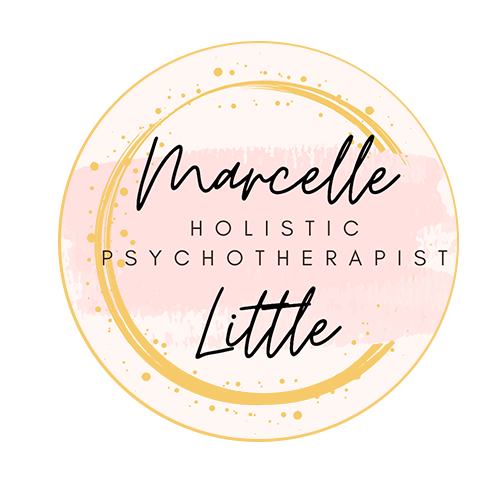Emotional Regulation Techniques for Managing Anxiety
Managing anxiety can feel overwhelming, especially if you’re navigating a life transition, balancing cultural adjustment as an expat, or struggling with patterns like people-pleasing and codependency. In my work as a psychotherapist, I’ve seen how anxiety often emerges when our emotions feel bigger than our capacity to hold them. The good news is that emotional regulation—learning to recognize, understand, and work with our emotional states—offers a powerful way forward. By integrating mind and body, and drawing on tools from somatic therapy, EMDR, and mindfulness, you can begin to feel more grounded, secure, and in control.
Understanding Emotional Regulation
Emotional regulation is not about pushing emotions away—it’s about cultivating awareness and developing a safe container for them. As Bessel van der Kolk reminds us in The Body Keeps the Score, emotions live not only in our thoughts but also in our bodies. Anxiety can manifest as tightness in the chest, shallow breathing, or racing thoughts.
Developing emotional regulation begins with noticing these signals and building self-compassion around them. Keeping a journal, practicing mindful check-ins, or using grounding skills can help you track patterns and understand your triggers. Over time, you build the capacity to respond—rather than react—to overwhelming emotions.
For many women I work with, particularly those caught in cycles of people-pleasing or navigating fraught mother-daughter dynamics, emotional regulation becomes an act of reclaiming power: the choice to feel without becoming flooded.
Mindfulness: Staying Present and Tracking Inner Patterns
Mindfulness helps anchor you in the present moment. Research by Jon Kabat-Zinn and others shows how mindfulness reduces stress and strengthens resilience. But mindfulness is also a powerful way to notice patterns of thought and the different “parts” of yourself that show up in anxious moments.
For example, you may notice an inner critic that tells you, “You’re not good enough,” or an inner perfectionist pushing, “You must do everything flawlessly.” Instead of fusing with these voices, mindfulness invites you to step back and simply observe them.
Richard Schwartz, developer of Internal Family Systems (IFS), emphasizes that these parts are protective, even if their strategies cause pain. By mindfully tracking when they appear—perhaps journaling what they say, how your body feels, and what triggers them—you begin to cultivate self-leadership. Over time, you can dialogue with these parts and remind yourself: “This is only one part of me, not all of me.”
Somatic Integration: Embodying Change
Noticing parts and patterns cognitively is powerful, but lasting change happens when it’s also embodied. Somatic therapy (Pat Ogden, Peter Levine) helps integrate what we notice with how we feel in the body.
For example, if your inner critic shows up with tightness in the chest or clenched jaws, you might place a hand on your heart or soften your shoulders while breathing deeply. By pairing somatic awareness with mindful recognition of the part, you send your nervous system a new signal: It’s safe to soften here.
This combination—tracking thoughts with mindfulness and releasing tension with body-based practices—creates new neural pathways and a deeper sense of regulation.
A Cognitive Step: Identifying Core Beliefs
Alongside mindfulness and somatic practices, it can help to gently identify the core belief each anxious part holds. The inner critic might believe, “If I’m hard on you, you won’t be rejected.” The perfectionist might believe, “If you do everything flawlessly, you’ll be safe and loved.”
By naming the part and its core belief, you bring clarity and compassion. Kristin Neff’s research on self-compassion suggests that meeting these beliefs with kindness rather than judgment is transformative. Over time, this helps shift the belief from a rigid rule to one possible perspective, opening the door to new ways of relating to yourself.
Breathing and Grounding for Regulation
Breathing techniques remain some of the simplest and most effective ways to regulate anxiety. Practices like 4-7-8 breathing or box breathing calm the nervous system, making it easier to access mindful awareness of your parts. Pairing breathwork with somatic grounding—such as feeling your feet on the floor or holding a grounding object—can help anchor you when anxiety feels overwhelming.
Building a Support Network
No one is meant to navigate anxiety alone. Emotional safety grows when we feel seen and supported. Reaching out to trusted friends, joining support groups, or working with a therapist can help you regulate emotions within connection—what attachment theorists call co-regulation.
In my work with clients, especially women balancing caregiving roles or strained mother-daughter relationships, creating a secure relational space allows them to step into new patterns of self-expression, boundary-setting, and empowerment.
Moving Toward Emotional Balance
Emotional regulation is not a one-time skill—it’s a lifelong practice. By integrating mindfulness, parts work, somatic tools, breathwork, and supportive relationships, you can build a toolkit that supports you in moments of anxiety.
Whether you’re navigating a life transition, healing old relational wounds, or simply seeking more peace in your daily life, these practices invite you into deeper connection—with yourself, with your body, and with others. Anxiety may show up, but it doesn’t have to define your story.
I’m Marcelle Little, a California and Florida-licensed psychotherapist (LMFT #129593, TPMF1241) and UK-registered practitioner offering online therapy for adults in California, Florida, and select European countries. My work integrates EMDR, somatic therapy, parts work, and depth psychology to help individuals heal trauma, anxiety, and intergenerational wounds.

